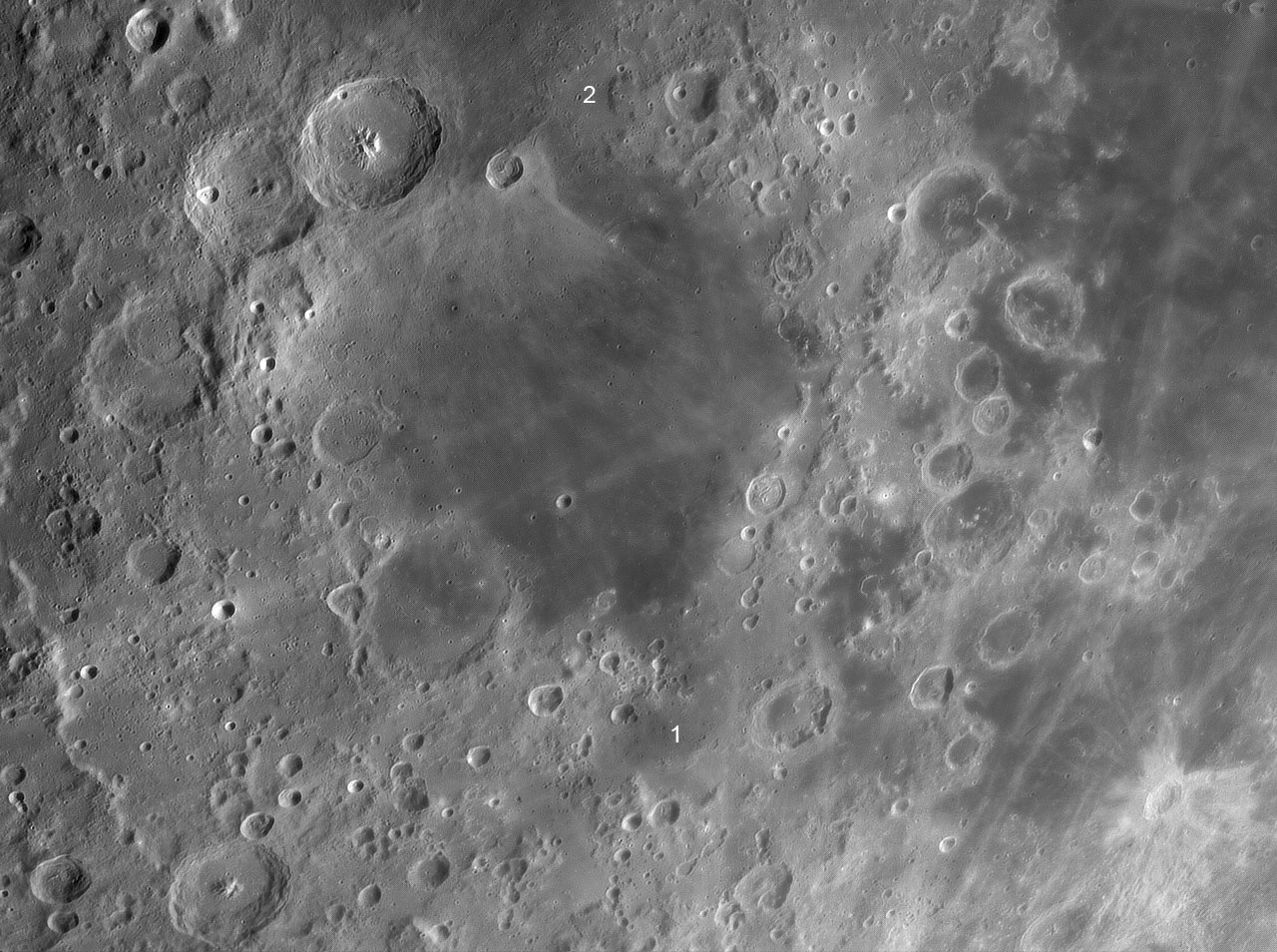January 20, 2013
Fresh Photons, Fresh View

image by " rel="nofollow Dmitry Makolkin, Russia
Dmitry's email submitting this image stated that it was only 1 hour old. I was excited to see photons so recently from the Moon and thought that perhaps their freshness would allow me to see something new. And they did, two things. But before noticing them I admired the tone of this high Sun view that permitted details to be clearly seen everywhere from the Altai basin rim, the central peaks of Theophilus, the basin crater chain through Capella, the dark maria flooding craters on the eastern rimless side of Nectaris, and the concentric crater " rel="nofollow Crozier H. Lovely detail everywhere. The two dark pyroclastic patches at Daguerre and Bohnenberger, and the two dark halo craters (impacts that excavated mare lavas from under T's rays) east of Theophilus are conspicuous. But then I wonder why there was an area of semi-darkness (labelled 1) that was neither mare lava nor pyroclastics between Fracastorius and Santbech. The patch is not sharply bounded, nor very dark, as it might be if lavas. And it doesn't look like there are vents for pyroclastics. LRO QuickMap reveals that this is an area with a concentration of small craters but nothing else. But the old high Sun Clementine begins to explain it. A number of the small craters appear to have excavated underlying mare basalts that have been strongly lightened by crater ejecta and rays. The Clementine iron " rel="nofollow mapconfirms it, showing the green of mare lavas. The second new thing brought to my attention by the young photons of Dmitry's image is an apparent roundish smooth area (2) east of Isidorus. This is bigger than Isidous, and surrounded by slightly rougher and more cratered terrain. The Clementine iron map shows the smooth material is not ray-dusted lavas, and " rel="nofollow LRO confirms that it is smoother than its surroundings. A proper scientist would say, I hypothesize ...., but I'll just guess that it is basin ejecta - from Imbrium, or maybe Nectaris or Crisium - that arrived in a fluidized state and filled in this low spot.
" rel="nofollow Chuck Wood
Technical Details
Jan 19, 2013, 203056. TAL-250K, filter - Astronomik IR Pro 742nm, camera - VAC-136 (CMOS, 1280x960, 30fps). Stacked 250 frames of 3000. Deconvolution, levels, local contrast.
Related Links
Rükl plate 58
21st Century Atlas charts 6 & 7 .
Dmitry's " rel="nofollow gallery



